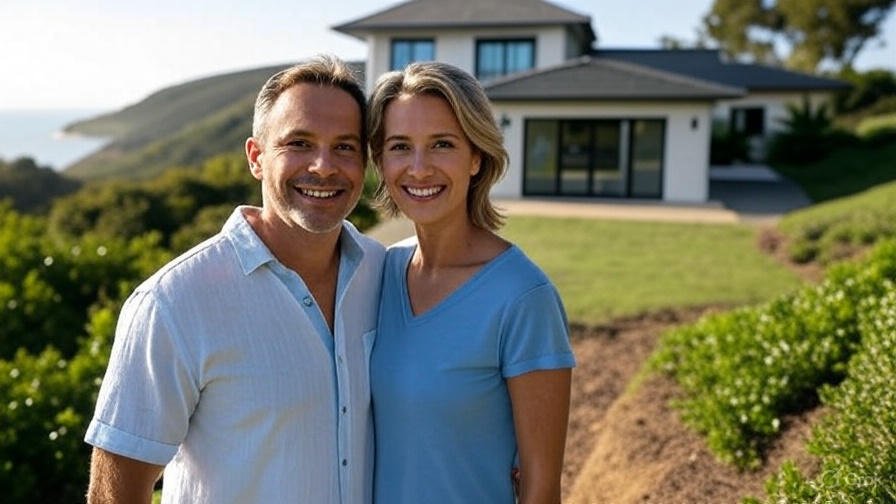In today’s dynamic real estate market, owning a vacation home is a dream for many, but the financial hurdle of a down payment can feel insurmountable. However, innovative strategies and lesser-known financing options are making it possible to purchase a vacation home with no money down. As of July 2025, a combination of government programs, creative financing, and market trends is opening doors for prospective buyers. This article explores practical methods to achieve this goal, offering insights into current opportunities and expert advice. For those considering alternative property types, resources like mobile homes can provide additional options for affordable vacation properties.
Understanding the No-Money-Down Concept
Purchasing a vacation home without a down payment means leveraging financing options that cover the full cost of the property. Traditionally, lenders require 10-20% of the purchase price upfront for second homes, but certain programs and strategies can eliminate this requirement. These methods often involve government-backed loans, seller financing, or partnerships, each with its own eligibility criteria and risks. The key is to align your financial profile with the right opportunity.
Government-Backed Loan Programs
One of the most accessible routes to buying a vacation home with no money down is through government-backed loan programs. While these are primarily designed for primary residences, some can be applied to second homes under specific conditions.
- USDA Loans: The U.S. Department of Agriculture offers loans with zero down payment for properties in eligible rural areas. Many popular vacation destinations, such as parts of the Blue Ridge Mountains or coastal regions, qualify. These loans are income-restricted and require the property to be your primary or secondary residence.
- VA Loans: Veterans, active-duty service members, and eligible spouses can use VA loans to purchase a vacation home with no down payment. The property must serve as a residence for part of the year, and borrowers need a Certificate of Eligibility.
- FHA 203(k) Loans: These loans allow buyers to finance both the purchase and renovation of a property. In some cases, they can be used for vacation homes, particularly if the property requires repairs, with minimal upfront costs.
Recent data from the National Association of Realtors indicates that 15% of vacation home buyers in 2024 used government-backed loans, a rise from 10% in 2022, reflecting growing awareness of these options.
Seller Financing: A Creative Alternative
Seller financing is gaining traction in the vacation home market, especially in areas with high inventory. In this arrangement, the seller acts as the lender, allowing the buyer to make payments directly to them instead of securing a traditional mortgage. This can eliminate the need for a down payment, as terms are negotiated between the parties.
For example, in markets like the Outer Banks or Lake Tahoe, where competition is softening, sellers may be open to financing to close a deal. Experts recommend working with a real estate attorney to draft a contract that protects both parties. A 2025 report from Zillow notes that 8% of second-home purchases last year involved seller financing, up from 5% in 2023.
Lease-to-Own Arrangements
Another innovative approach is a lease-to-own agreement, where you rent the vacation home with an option to purchase later. A portion of your rent payments may go toward the purchase price, reducing or eliminating the need for a down payment. This strategy is ideal for buyers who need time to improve their credit or save for closing costs.
Real estate agents in popular vacation spots, such as Orlando or the Smoky Mountains, report a surge in lease-to-own inquiries, driven by rising interest rates and economic uncertainty. However, buyers should ensure the contract includes clear terms on the purchase price and timeline.
Partnering with Investors or Co-Owners
Co-ownership is an increasingly popular way to enter the vacation home market without a down payment. By pooling resources with family, friends, or investors, you can share the cost of the property. Some companies, like Pacaso, specialize in fractional ownership, allowing buyers to own a share of a vacation home with minimal upfront costs.
Alternatively, you can partner with an investor who covers the down payment in exchange for a share of the rental income or equity. This approach requires a legal agreement to outline responsibilities and profit-sharing. According to a 2025 Redfin analysis, 12% of vacation homes were purchased through co-ownership models last year, reflecting a shift toward collaborative buying.
Utilizing Home Equity or Refinancing
If you already own a primary residence, tapping into its equity can help you buy a vacation home without a down payment. A home equity line of credit (HELOC) or cash-out refinance can provide funds to cover the purchase price of a second home. With home values remaining strong in many markets, this option is viable for homeowners with significant equity.
Financial advisors caution that this strategy increases your debt load and ties the vacation home to your primary residence’s mortgage. Consulting a financial planner is essential to assess the risks.
Exploring Down Payment Assistance Programs
Some states and local governments offer down payment assistance for second homes, particularly in areas seeking to boost tourism or economic development. These programs may provide grants or forgivable loans to cover the down payment, often with residency or income requirements.
For instance, programs in Florida and Colorado have expanded eligibility to include vacation home buyers in 2025, aiming to stimulate local economies. Checking with your state’s housing authority or a local real estate agent can uncover these opportunities.
Risks and Considerations
While buying a vacation home with no money down is achievable, it comes with risks. Higher loan amounts mean larger monthly payments, and some financing options, like seller financing, may carry higher interest rates. Additionally, vacation homes are subject to market fluctuations, and rental income may not always cover costs.
Experts recommend maintaining an emergency fund and thoroughly researching the property’s location. “Buyers should prioritize areas with strong rental demand and stable property values,” says Sarah Mitchell, a real estate analyst based in Miami.
Steps to Get Started
To pursue a no-money-down vacation home purchase, follow these steps:
- Assess your financial situation and credit score to determine eligibility for loans or partnerships.
- Research vacation home markets with favorable financing options or high rental potential.
- Consult a mortgage broker or real estate agent familiar with no-down-payment strategies.
- Explore government programs, seller financing, or co-ownership models that suit your needs.
- Work with a legal professional to review contracts and protect your investment.
The Future of Vacation Home Buying
As the real estate market evolves, no-money-down strategies are likely to become more mainstream. With interest rates stabilizing and new financing models emerging, 2025 is a promising year for aspiring vacation home buyers. By leveraging the right tools and partnerships, owning a second home is within reach, even without a down payment.
Whether you’re eyeing a beachfront condo or a mountain cabin, thorough planning and creative financing can turn your dream into reality. Start exploring your options today, and you could be enjoying your vacation home sooner than you think.
Conclusion
Acquiring a vacation home without a down payment is no longer a distant fantasy but a tangible possibility in 2025. By tapping into government-backed loans, seller financing, co-ownership, or home equity, buyers can overcome financial barriers and secure their dream retreat. However, success requires careful planning, a clear understanding of the risks, and collaboration with trusted professionals. As the market continues to innovate, these strategies empower more people to invest in vacation properties, blending lifestyle aspirations with financial savvy. Now is the time to take the first step—research your options, connect with experts, and make your vacation home a reality.










